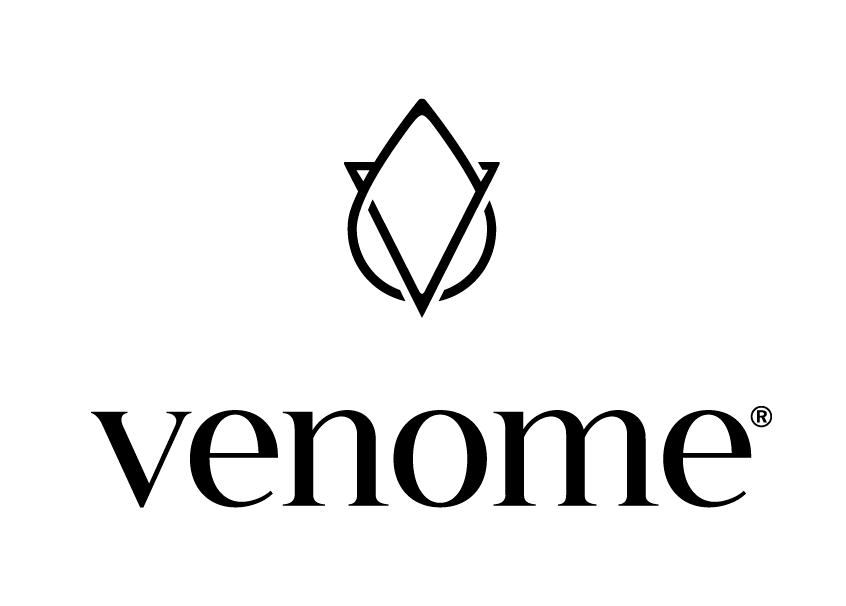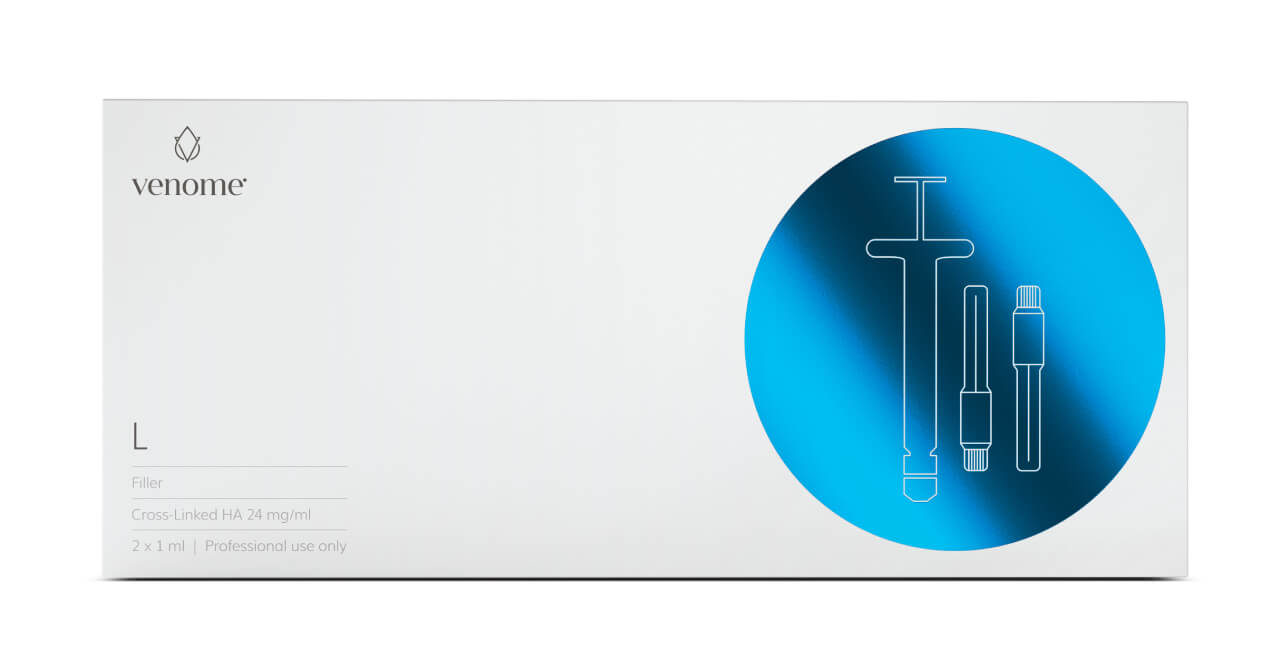FILLER L
-
EFFECT
-
INGREDIENTS
-
CONTRAINDICATIONS
Volume restoration - shaping and enhancing natural beauty. Venome Filler L is a product dedicated to restoring face volume. It is a monophasic, uniform product which helps smooth out medium and deep wrinkles. When aging skin on the cheeks loses volume, it becomes saggy, which makes the nasolabial folds more prominent. The use of the technology and the optimal method of cross-linking helped obtain a gel of the perfect density for restoring volume in the middle part of the face. Venome Filler L effectively replaces the lost tissue, contours the face and helps achieve the desired shape.
The effect lasts between 6 and 9 months, though this depends on the injection technique, as well as a number of biological and environmental factors.
Medical device for external use, to be used by medical professionals only.
The product contains 24 mg/ml of monophasic, cross-linked hyaluronic acid in the form of viscoelastic gel.
Venome Filler is contraindicated in case of:
- allergy to hyaluronic acid
- auto-immune disease or during immunotherapy
- acute skin infection in the area to be treated (e.g. acne)
- acute influenza and feverish cold
- acute systemic infection (herpes, psoriasis)
- coagulation disorder
- a tendency to form scars
- pregnancy or breast-feeding
- people under age of 18
Venome Filler must not be injected into:
- blood vessels
- joints
- breasts
Not recommended for treatment of orbita and front head lines.
Side effects:
Immediately after treatment, injection related reactions like redness and swelling and in rare cases itching or bruising may be observed at the injection site(s). The day after a pronounced swelling may occur but this will resolve spontaneously within 3-5 days. Allergic reactions are extremely rare, because Venome Filler is protein free due to the non-animal source.
Rarely, formation of nodules or oedema may occur at the injection site.
In case of an inflammatory reaction it is recommended that the patient visits the physician.
In the literature for filler materials based on hyaluronic acid, individual cases of granuloma, abscesses, delayed hypersensitivity reactions and discolouration have been reported. Furthermore in literature, other very rare individual cases of necrosis have been described, due to injection into arterial vessels or occlusion by the filler pressing against the arterial wall.

